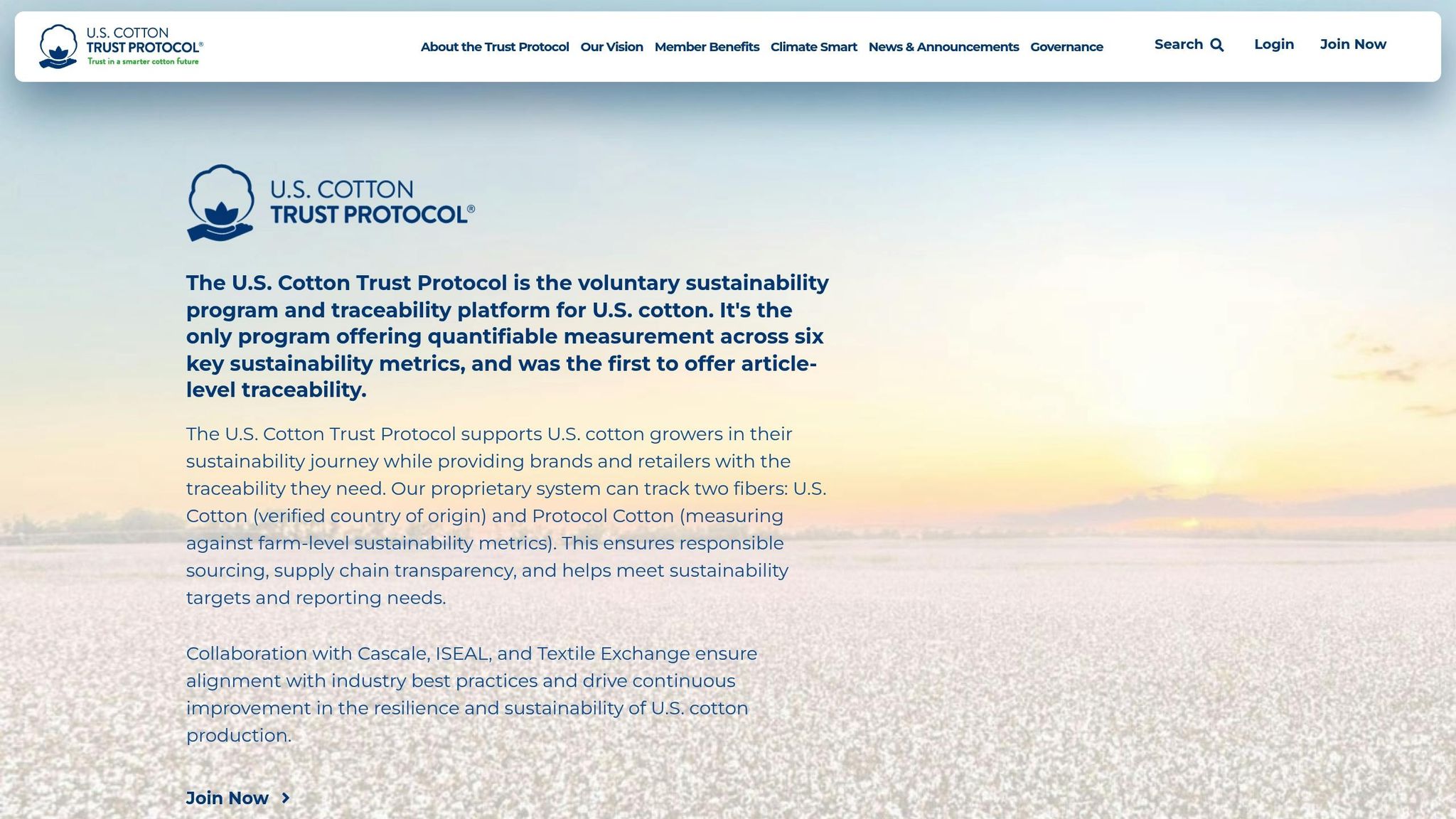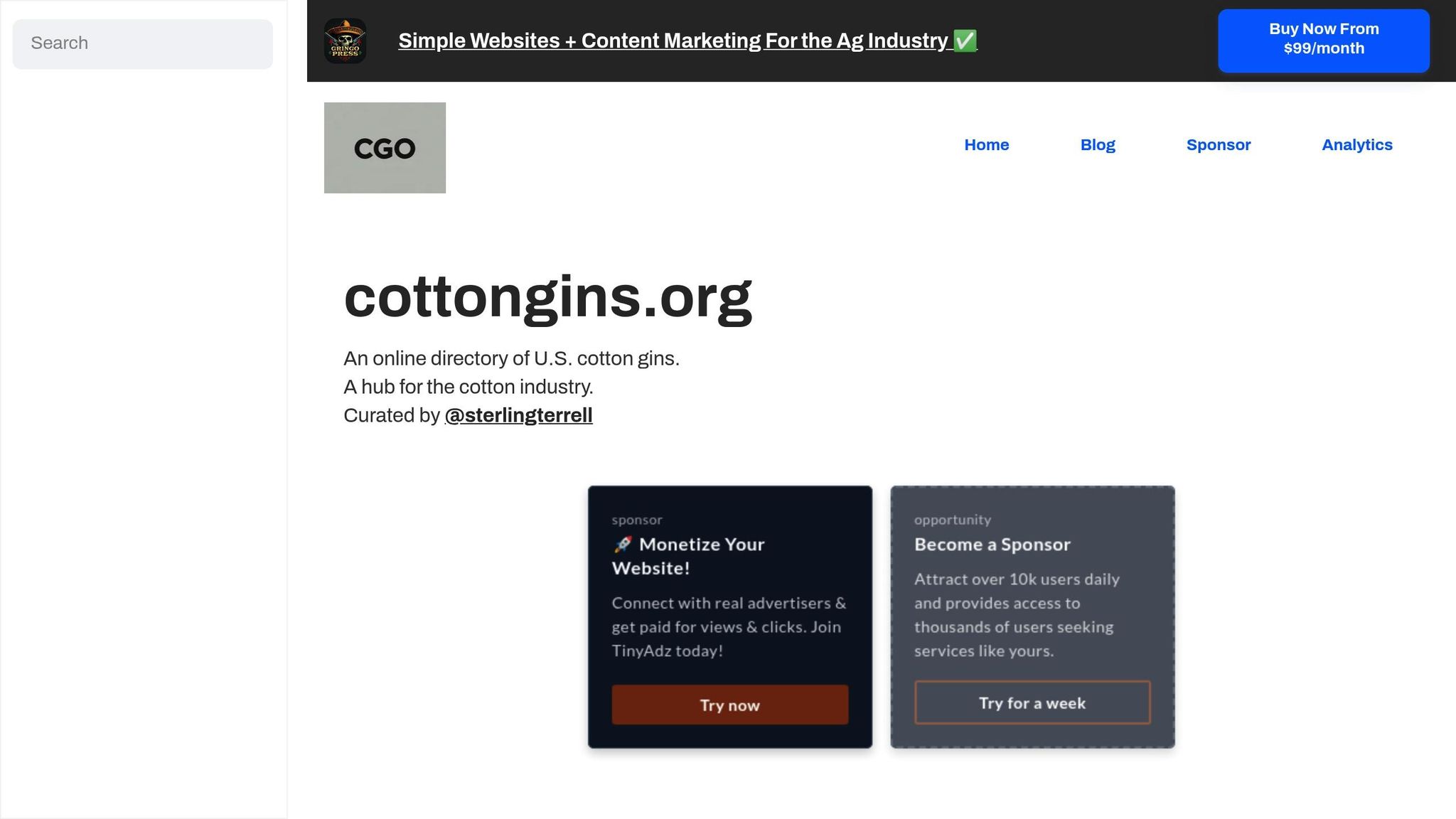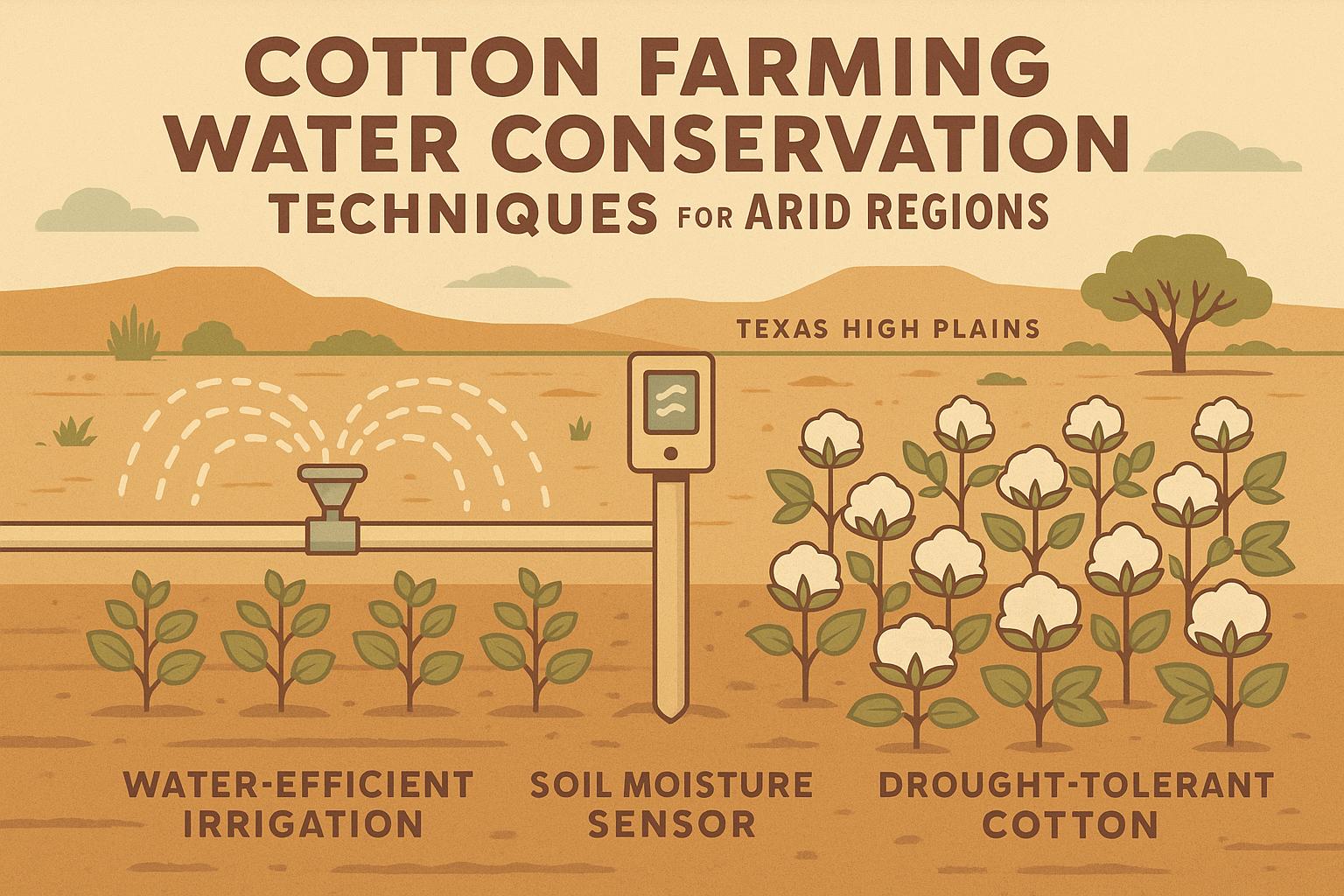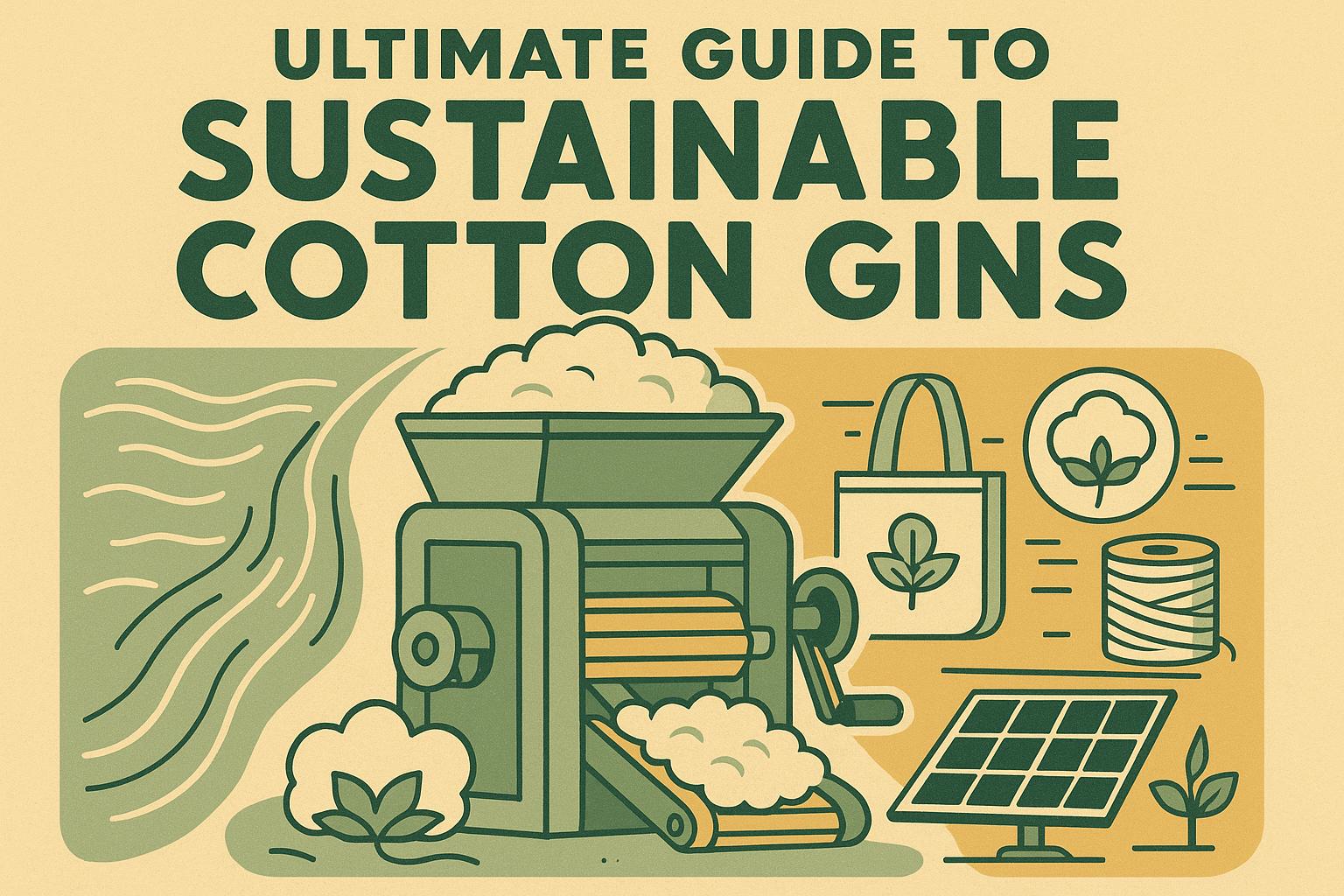The U.S. Cotton Trust Protocol helps cotton gins prove they follow responsible and sustainable practices. By joining, gins can improve fiber tracking, gain certification, and connect with buyers looking for sustainable cotton. Here's what you need to know:
- Why Join? Certification builds trust with buyers, enhances market visibility, and promotes sustainable practices.
- How to Start: Submit an application with details about your operations and sustainability efforts.
- Key Steps: Train staff, integrate tracking systems, and follow reporting guidelines to meet standards.
- Marketing Benefits: List your gin on cottongins.org and promote your certification to attract partners.
Joining the Protocol ensures compliance, improves sustainability, and expands your market reach.
Getting Started with the Protocol
How to Join and Basic Requirements
To get started, prepare an overview of your operations. This should include details like your annual production capacity, equipment specifications, and documented sustainability practices. Make sure your sustainability efforts are clearly outlined. Once ready, submit your application online for a quick review.
Training and Setup Steps
After your application is approved, the next step is training your staff and integrating the necessary systems. Begin by reviewing your current processes to identify areas for improvement and to ensure accurate tracking of sustainability data. Staff training will cover how to collect and report data, as well as any operational changes required. Finally, update your profile on cottongins.org to showcase your participation in the protocol.
Joining the U.S. Cotton Trust Protocol I COTTON USA™

Data Systems and Tracking
Strong data systems are key to maintaining fiber traceability, which plays a major role in meeting sustainability goals.
Bale Data Management
Tracking Permanent Bale Identification (PBI) accurately is essential for staying compliant with the Protocol. Develop a clear system to record and verify data for every bale. Make sure your tracking system includes all the required metrics for verification.
After that, align your software systems to keep these records organized and accessible.
Steps for Software Integration
To connect your gin management software with the Protocol's platform, follow these steps:
- System Assessment: Evaluate your current software to pinpoint any gaps in meeting the Protocol's requirements.
- API Configuration: Set up secure API connections between your gin software and the Protocol platform.
- Data Mapping: Ensure fields are mapped correctly to allow smooth data transfers.
Once the integration is complete, shift your focus to creating consistent reporting practices.
Data Reporting Guidelines
Establish clear reporting standards and provide staff training to ensure accurate data collection and compliance verification.
sbb-itb-0e617ca
Meeting Protocol Standards
To meet compliance requirements, it's essential to have well-documented procedures and ongoing monitoring in place. For the U.S. Cotton Trust Protocol, this means thorough documentation and consistent oversight.
Certification Steps
-
Prepare Your Documentation
Gather the following essential documents:
- Procedures for daily operations and safety protocols
- Maintenance logs for equipment
- Records from tracking systems
- Energy and water usage data, including conservation efforts
-
Schedule an Initial Assessment
During this step, an auditor will:
- Inspect your facilities
- Review your documentation
- Conduct staff interviews
- Confirm your data collection processes are accurate
-
Create an Improvement Plan
Outline a clear plan that includes:
- Defined goals for sustainability
- A timeline for implementation
- Assigned resources and responsibilities
- Methods for ongoing monitoring
Once certified, maintaining these standards is key to retaining your Protocol status.
Keeping Protocol Status
Detailed Reporting
- Keep thorough records of all operations and update them as needed.
- Ensure training logs reflect any new procedures or standards.
Scheduled Audits
- Be ready for periodic audits to verify compliance.
- Provide updated documentation and demonstrate consistent improvements.
Ongoing Training
- Offer regular training sessions on Protocol compliance.
- Track attendance and stay informed about any updates to the Protocol.
Marketing Your Protocol Status
Promote your Protocol certification to attract partners who prioritize sustainability. Thoughtful promotion not only highlights your commitment but also helps you connect with businesses that value environmentally responsible practices.
Sharing Protocol Results
Use various channels to highlight your Protocol certification:
Online Presence
- Display the Protocol certification badge prominently on your website's homepage.
- Include your sustainability metrics in email signatures.
- Share updates about your certification on social media and newsletters.
Customer Outreach
- Mention your certification in contracts and proposals.
- Publish quarterly reports focused on sustainability progress.
- Share case studies that detail your sustainability achievements.
Industry Events
Bring attention to your certification during trade shows, conferences, and other industry gatherings to engage with businesses focused on sustainable cotton practices.
A strong sustainability report can help you stand out. Here's a quick guide to what it should include:
| Metric Category | Highlight This | Why It’s Important |
|---|---|---|
| Water Usage | Gallons saved per bale | Reflects resource efficiency |
| Energy Efficiency | Reduction in power consumption | Underscores cost-effectiveness |
| Waste Management | Increase in recycling rates | Shows commitment to the environment |
| Quality Control | Lower contamination rates | Demonstrates operational improvement |
Additionally, listing your gin on cottongins.org can expand your market reach.
Adding Your Gin to cottongins.org

Featuring your Protocol-certified gin on cottongins.org helps you connect with customers interested in sustainable cotton processing.
How to Submit
- Go to the submission form on cottongins.org.
- Fill out all required details about your gin.
- Highlight your Protocol certification prominently.
- Provide up-to-date sustainability metrics.
- Include contact details for inquiries.
Boost Your Visibility
Consider sponsorship opportunities on cottongins.org to increase your exposure and attract more potential partners.
Next Steps
With your tracking systems and marketing efforts in place, it's time to strengthen your commitment to sustainability. After incorporating the Protocol and establishing your marketing strategy, focus on maintaining progress through ongoing improvements.
Set Up a Data Tracking System
Implement a system to monitor key sustainability metrics effectively.
| Focus Area | Metrics & Actions | Review Frequency |
|---|---|---|
| Bale Data | - Water usage per bale - Energy consumption trends - Waste reduction rates - Quality control statistics |
Weekly |
| Software Systems | Update software integrations | Monthly |
| Reporting | Prepare compliance documentation | Quarterly |
| Staff Training | Update staff on Protocol procedures | Semi-annually |
Once your tracking system is fully operational, take the next step by engaging more deeply with the Protocol community.
Join the Protocol Community
Become an active participant in the Protocol's knowledge-sharing network. Regular involvement offers several benefits:
- Stay informed about best practices
- Learn from other certified gins
- Gain access to new sustainability strategies
- Contribute to improvements across the industry
Establish Review Cycles
Develop a quarterly review schedule to assess your Protocol compliance and sustainability efforts. Use these reviews to:
- Identify areas for improvement
- Highlight achievements worth sharing
- Discover new efficiency opportunities
- Address any training gaps for staff
These regular evaluations ensure your data remains accurate and your operations continue to align with the Protocol's standards.
Take advantage of the Protocol's support resources to stay informed about emerging practices and new sustainability initiatives. Certification is just the beginning of your journey toward more sustainable cotton processing.
FAQs
What are the benefits of adopting the U.S. Cotton Trust Protocol for improving a cotton gin’s market presence and sustainability practices?
Integrating the U.S. Cotton Trust Protocol into your cotton gin operations can significantly enhance both your market visibility and sustainability efforts. By aligning with this program, you demonstrate a commitment to sustainable practices, which appeals to environmentally conscious brands and buyers.
Participation in the protocol also provides access to verified data and metrics that showcase your contributions to sustainability goals. This can help your gin stand out in a competitive market, strengthen relationships with stakeholders, and open doors to new business opportunities with companies prioritizing sustainable sourcing.
What steps can a cotton gin take to train its team for compliance with the U.S. Cotton Trust Protocol's standards?
To effectively train your team for compliance with the U.S. Cotton Trust Protocol, start by familiarizing them with the program's sustainability goals and reporting requirements. Host regular training sessions or workshops to educate staff on the specific practices they need to follow, such as accurate data collection, proper documentation, and adherence to environmental guidelines.
Consider creating easy-to-follow guides or checklists for daily operations to ensure everyone stays aligned with the protocol's standards. Encouraging open communication among team members can also help address any questions or challenges they may face during implementation. For additional resources or support, you can explore industry directories or consult with experts to ensure your team is well-prepared.
How can cotton gins align their data systems with the U.S. Cotton Trust Protocol for accurate fiber traceability?
To align your cotton gin's data systems with the U.S. Cotton Trust Protocol and ensure accurate fiber traceability, start by reviewing the protocol's guidelines and requirements. This includes understanding how data on cotton production and processing should be recorded and shared to meet sustainability standards.
Next, assess your existing systems to identify any gaps in data collection or reporting. Upgrading software or integrating tools that support fiber tracking may be necessary. Training staff on these systems and the importance of accurate data entry is also crucial for compliance and successful participation in the protocol.
By aligning your operations with the U.S. Cotton Trust Protocol, your gin can contribute to a more sustainable cotton supply chain while meeting the growing demand for traceable and responsibly sourced products.


